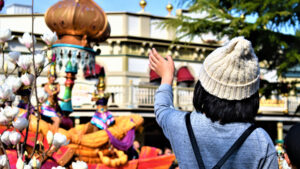Products Designed for Themed Entertainment

Everyone loves a parade, right? With beautiful floats, live performers, and an engaging soundtrack, they are often a star attraction of a theme park. Since they operate within the common areas of the park and require widely distributed audio, parades can be one of the most technically challenging applications to pull off. Thankfully, V16X and RidePlayer offer a suite of features like advanced network synchronization, integrated show control, and multi-track polyphonic audio playback that make even the toughest parades simple to implement.
| File | Description |
|---|---|
| Parade – Wayside.wsl | Example Script for Wayside Parade Controller |
| Parade – Float.wsl | Example Script for Onboard Parade Float system |
| Parade.pdf | Application documentation |
| Parade – Diagram.png | Application diagram |
| Parade Demo.mp4 | Video Walkthrough of Parade System |